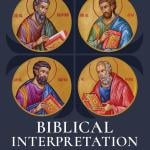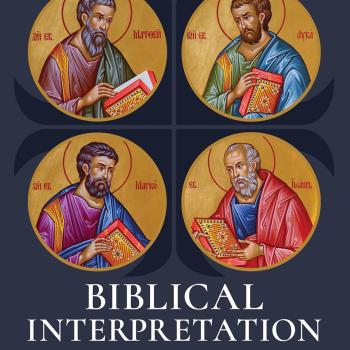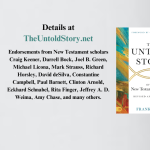One of the main things that stands out about the early church fathers was how concerned they were to make sure they used the Bible so it would be a word on target for their own audiences. But very often, these audiences lived in very different contexts to that of the original recipients of the NT documents and had different needs and interests. There was always a danger to assume that an application or significance of the text for a later context was in accord with its original meaning, or worse still that God in the person of the Spirit, had now given it a meaning at variance with the original inspired authors of the text. What compounded the problem was that not many of the church fathers actually knew the Hebrew OT and took a Greek translation of it to be the unquestioned version of choice for Christian use. This only further promoted the reading the OT not merely in the light of the Christ event, but as part of the story, not merely the prequel or back story, of the Christ event.
Origen basically talks about ‘not only the obvious meaning of a text’ but also the hidden meaning, hidden from most readers, except perhaps the very pious. Piety is seen as a pre-requisite for reading the text properly to get at the deeper meaning and encounter the divine mystery, or even God himself through the text. The problem with this inherent two levels to the text, is that it suggests that God is speaking through the text to the reader, in ways that go beyond God speaking in the text. But what exactly does it mean in 2 Tim, 3.16 that all Scripture itself is God-breathed and profitable to teaching and training in righteousness? The Bible is not supposed to be viewed as some sort of ink blot ot Rorschach text which you must ponder to get at the hidden meaning. One thing the piety requirement ignores is how many thousands of times pagans and even anti-Christians of various sorts have picked up the Bible and been convicted, convinced, and converted through the reading of the Word under the guidance of the Parakletos— the Holy Spirit.
Vatican 2 did a great service to the Catholic in helping it to refocus on the original inspired meaning of Biblical texts, as the statement in Dei Verbum “Since God speaks in Sacred Scriptures through human beingz, in a human fashion, the interpreter of Sacred Scripture, in order to see clearly what God wanted to communicate to us, should carefully investigate what meaning the sacred writers really intended, and what God wanted to manifest by means of their words.” (cited in Daley, p. 39). It is precisely because God acted in a specific way and time in history through specific persons and then through specific Christians writers who were inspired to write what they did about the Gospel of Jesus Christ, and not only so, but because Christ really came and acted in human history, really died on a cross and rose from the dead, that the proper historical interpretation of these seminal events is so critical. It is quite unacceptable, and would have been to Paul and others, to assume that the meaning of the text only finally ‘jelled’ when the church fathers got hold of the NT documents or when the canon showed up in the 4th century. NO, the NT documents had meanings for their original historical audiences, and that meaning has not changed over time. What the original inspired writer meant back then is still what it means today. Let’s take one small example. Some cessationist interpreters have taken 1 Cor. 13 .8-10 says “As for prophecies, they will pass away; as for tongues, they will cease; as for knowledge, it will pass away. 9 For we know in part and we prophesy in part, 10 but when the perfect comes, the partial will pass away.” The cessationist argues that ‘the perfect’ refers to the completed canon of Scripture, and therefore the gifts of prophecy, tongues etc. while characteristic of the apostolic age, did not continue beyond that period. But even a moments reflection will tell you that by the ‘perfect’. Paul could not be referring to the Bible itself, but surely to the return of Christ at the eschaton, which other texts in 1 Corinthians make evident (see 1 Cor. 15). Furthermore, Paul’s audience in Corinth could not possibly have understood Paul to be referring to a book that had not yet been fully written, never mind completed and available in the church in Corinth. Paul’s subject matter in 1 Cor. 13, as for instance 1 Cor. 13.1-2 shows is the spiritual gifts, including speaking to angelic tongues, NOT the assembling of the Bible. (see the whole context in 1 Cor. 12-14) . The great sin of so many of the church fathers was to read the NT anachronistically, reading back into the text, later ideas, later theologies, not to mention later hermeneutical principles for interpreting the Bible. In the end, the church fathers need to be read with a good historically critical eye, just as the. Bible should be.
















